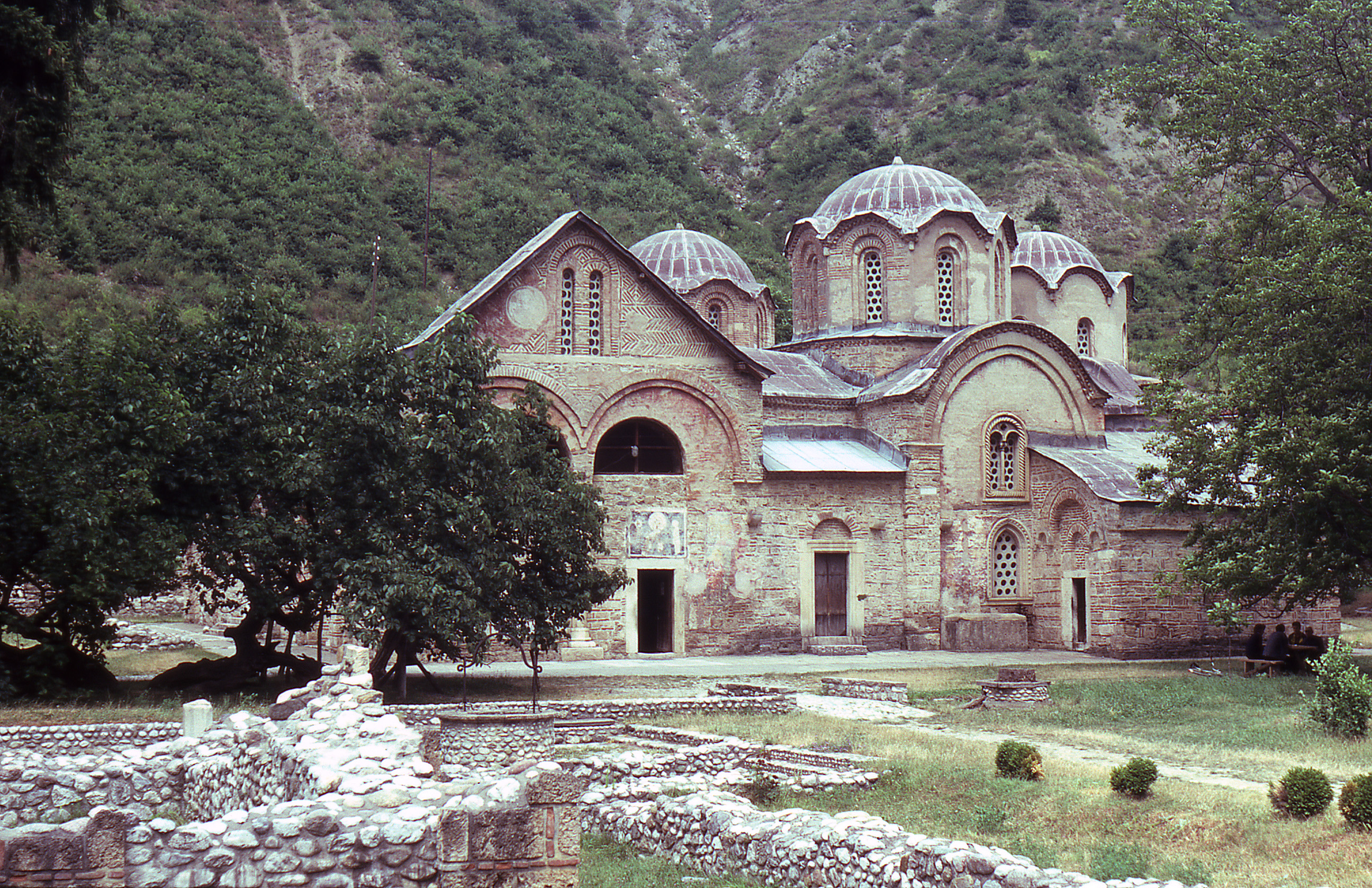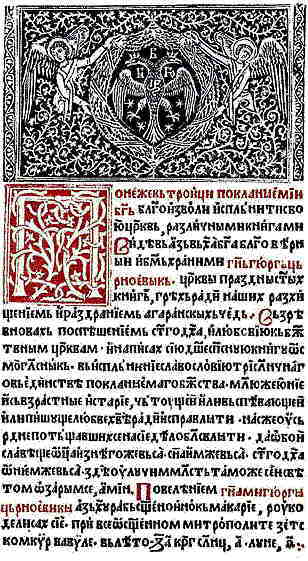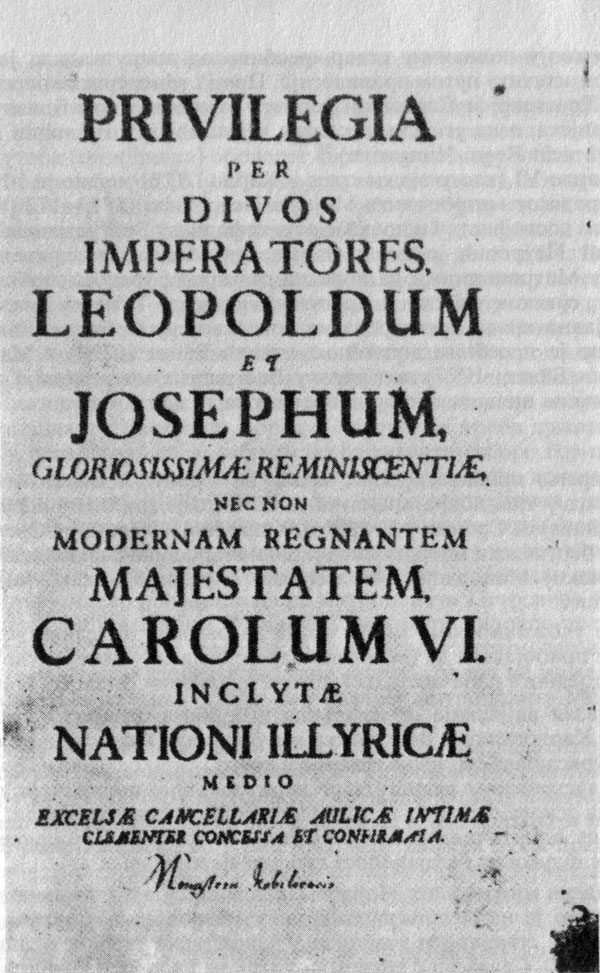|
Arsenije III Crnojević
Arsenije III Crnojević ( sr-Cyrl, Арсеније III Црнојевић; 1633 – 27 October 1706) was the Serbian Patriarch, Archbishop of Peć and Serbian Patriarch from 1674 to his death in 1706. In 1689, during the Habsburg-Ottoman War (1683–1699), Habsburg-Ottoman War (1683–1699), he sided with Habsburgs, upon their temporary Habsburg-occupied Serbia (1686–91), occupation of Serbia. In 1690, he left the Patriarchal Monastery of Peć and led the Great Migration of the Serbs (1690), Great Migration of Serbs from Ottoman Serbia into the Habsburg monarchy. There he received charters (the "''Serbian Privileges''" of 1690, 1691, and 1695), granted to him by Emperor Leopold I, Holy Roman Emperor, Leopold I, securing religious and ecclesiastical autonomy of Eastern Orthodoxy in the Habsburg Monarchy. In the meanwhile, after restoring their rule in Serbian lands, Ottomans allowed the appointment of a new Serbian Patriarch, Kalinik I, Serbian Patriarch, Kalinik I (1691–1710) ... [...More Info...] [...Related Items...] OR: [Wikipedia] [Google] [Baidu] |
Vasilije Romanovich And Jov Vasilijevich
Vasilije Romanovič (Kiev, Imperial Russia, c. 1700 - Hopovo, now Serbia, 1773) and Jov Vasilijevič (Kiev, Imperial Russia, c. 1700 - Kiev, Imperial Russia, after 1760) were accomplished icon painters who came from Imperial Russia to Srem on an invitation from the Arsenije IV Jovanović Šakabenta together with a group of Serbian newly graduated academic artists of the Kiev Pechersk Lavra. Romanovič became part of the teaching staff of a newly-constructed Academy of Painting, built and funded by the metropolitan, while Vasiljevič became a court painter of the Metropolitanate of Karlovci. Romanovič settled in the Monastery of Hopovo where he became tonsured as a monk and where he died in 1773. His painting can be found in every church and monastery throughout Fruska Gora and other neighbouring regions, including Besenovo Monastery, ''Pravoslavna Crkva Roždestva Presvete Bogorodice'', Serbian Orthodox church in Slatinski Drenovac''Bogorodicina crkva'' in Morović and many other ... [...More Info...] [...Related Items...] OR: [Wikipedia] [Google] [Baidu] |
Serbs
The Serbs ( sr-Cyr, Срби, Srbi, ) are a South Slavs, South Slavic ethnic group native to Southeastern Europe who share a common Serbian Cultural heritage, ancestry, Culture of Serbia, culture, History of Serbia, history, and Serbian language, language. They primarily live in Serbia, Kosovo, Bosnia and Herzegovina, Croatia, Montenegro as well as in North Macedonia, Slovenia, Germany and Austria. They also constitute a significant diaspora with several communities across Europe, the Americas and Oceania. The Serbs share many cultural traits with the rest of the peoples of Southeast Europe. They are predominantly Eastern Orthodoxy, Eastern Orthodox Christians by religion. The Serbian language, Serbian language (a standardized version of Serbo-Croatian) is official in Serbia, co-official in Kosovo and Bosnia and Herzegovina, and is spoken by the plurality in Montenegro. Ethnology The identity of Serbs is rooted in Eastern Orthodoxy and traditions. In the 19th century, the ... [...More Info...] [...Related Items...] OR: [Wikipedia] [Google] [Baidu] |
Old Montenegro
Old Montenegro ( Montenegrin and sr-Latn-Cyrl, Stara Crna Gora, Стара Црна Гора, separator=" / "), also known as Montenegro proper ( sr-Latn-Cyrl, Prava Crna Gora, Права Црна Гора, separator=" / ", label=none), or True Montenegro ( sr-Latn-Cyrl, Istinska Crna Gora, Истинска Црна Гора, separator=" / ", label=none), is a term used for the embryonic part of modern Montenegro. In historical context, the term designates the original territory of the Principality of Montenegro, before the territorial expansion, ratified by the Congress of Berlin in 1878, or even more precisely - the territory of the Prince-Bishopric of Montenegro prior to its unification with the region of Brda in the first half of the 19th century. During the Ottoman period, from the 16th up to the 18th century, the original (proper) Montenegro was made up of the ''Montenegrin tribes'' ( Montenegrin and sr-Latn-Cyrl, crnogorska plemena, црногорска плем� ... [...More Info...] [...Related Items...] OR: [Wikipedia] [Google] [Baidu] |
Bajice
Bajice ( cnr-Cyrl, Бајице) is a village in the municipality of Cetinje, Montenegro , image_flag = Flag of Montenegro.svg , image_coat = Coat of arms of Montenegro.svg , coa_size = 80 , national_motto = , national_anthem = () , image_map = Europe-Mont .... Demographics According to the 2011 census, its population was 781. References Populated places in Cetinje Municipality {{Montenegro-geo-stub ... [...More Info...] [...Related Items...] OR: [Wikipedia] [Google] [Baidu] |
Zeta Under The Crnojevići
Zeta ( sr-cyrl, Зета) was one of the Serbian medieval polities that existed between 1371 and 1496, whose territory encompassed parts of present-day Montenegro and northern Albania. The Crnojević noble family ruled the Principality of Zeta from 1451 until 1496. Background In 1421, before his death and under the influence of his mother Jelena, Balša III passed the rule of Zeta to Serbian Despot Stefan Lazarević. Despot Stefan fought the Republic of Venice and regained Bar in mid-1423, and in 1424 his nephew Đurađ Branković regained Drivast and Ulcinium (Ulcinj). With the death of Despot Stefan in 1427, his nephew Đurađ inherited the rule of Serbia. History Ascent to power The most important roles in establishing this family's rule in Zeta were played by Stefan I Crnojević (1451–1465) and his son Ivan (1465–1490). Ivan's son Đurađ Crnojević (1490–1496) was the last ruler from this dynasty. Stefan Stefan I Crnojević consolidated his power in Zeta and ru ... [...More Info...] [...Related Items...] OR: [Wikipedia] [Google] [Baidu] |
Church Slavonic
Church Slavonic is the conservative Slavic liturgical language used by the Eastern Orthodox Church in Belarus, Bulgaria, North Macedonia, Montenegro, Poland, Russia, Ukraine, Serbia, the Czech Republic and Slovakia, Slovenia and Croatia. The language appears also in the services of the Russian Orthodox Church Outside of Russia, the American Carpatho-Russian Orthodox Diocese, and occasionally in the services of the Orthodox Church in America. In addition, Church Slavonic is used by some churches which consider themselves Orthodox but are not in communion with the Orthodox Church, such as the Montenegrin Orthodox Church and the Russian True Orthodox Church. The Russian Old Believers and the Co-Believers also use Church Slavonic. Church Slavonic is also used by Greek Catholic Churches in Slavic countries, for example the Croatian, Slovak and Ruthenian Greek Catholics, as well as by the Roman Catholic Church (Croatian and Czech recensions). In the past, Church Slavoni ... [...More Info...] [...Related Items...] OR: [Wikipedia] [Google] [Baidu] |
Patriarchate Of Peć In The 16th And 17th Century
Patriarchate (, ; , ''patriarcheîon'') is an ecclesiological term in Christianity, referring to the office and jurisdiction of a patriarch. According to Christian tradition, three patriarchates—Rome, Antioch, and Alexandria—were established by the apostles as apostolic sees in the 1st century. These were officially recognized by the First Council of Nicaea. The Patriarchate of Constantinople was added in the 4th century, and the Patriarchate of Jerusalem followed in the 5th century. These five sees were later recognized collectively as the pentarchy by the Council of Chalcedon in 451. Over the course of Christian history, additional patriarchates were gradually recognized by the original ancient episcopal sees. However, several of these later lost jurisdiction—primarily due to the Islamic conquests in the Middle East and North Africa—and became titular or honorary patriarchates without real institutional authority over their historical territories. History As C ... [...More Info...] [...Related Items...] OR: [Wikipedia] [Google] [Baidu] |
Manastir Pecka Patrijarsija 2
Bitola (; ) is a city in the southwestern part of North Macedonia. It is located in the southern part of the Pelagonia valley, surrounded by the Baba (North Macedonia), Baba, Nidže, and Kajmakčalan mountain ranges, north of the Medžitlija-Níki border crossing with Greece. The city stands at an important junction connecting the south of the Adriatic Sea region with the Aegean Sea and Central Europe, and it is an administrative, cultural, industrial, commercial, and educational centre. It has been known since the Ottoman Empire, Ottoman period as the "City of Consuls", since many European countries had consulates in Bitola. Bitola, known during the Ottoman Empire as Manastır or Monastir, is one of the oldest cities in North Macedonia. It was founded as Heraclea Lyncestis in the middle of the 4th century BC by Philip II of Macedon. The city was the last capital of the First Bulgarian Empire (1015–1018) and the last capital of Ottoman Rumelia, from 1836 to 1867. According to ... [...More Info...] [...Related Items...] OR: [Wikipedia] [Google] [Baidu] |
Metropolitanate Of Karlovci
The Metropolitanate of Karlovci () was a metropolitanate of the Eastern Orthodox Church that existed in the Habsburg monarchy between 1708 and 1848. Between 1708 and 1713, it was known as the Metropolitanate of Krušedol Monastery, Krušedol, and between 1713 and 1848, as the Metropolitanate of Sremski Karlovci, Karlovci. In 1848, it was elevated to the Patriarchate of Karlovci, which existed until 1920, when it was merged with the Metropolitanate of Belgrade and other Eastern Orthodox jurisdictions in the newly established Kingdom of Yugoslavia, Kingdom of Serbs, Croats and Slovenes to form the Serbian Orthodox Church. History During the 16th and 17th centuries, all of the southern and central parts of the former medieval Kingdom of Hungary (1301–1526), Kingdom of Hungary were under Turkish rule and organized as Ottoman Hungary. Since 1557, Serbian Orthodox Church in those regions was under jurisdiction of the Serbian Patriarchate of Peć. During the Great Turkish War, Aus ... [...More Info...] [...Related Items...] OR: [Wikipedia] [Google] [Baidu] |
Serbian Orthodox Church
The Serbian Orthodox Church ( sr-Cyrl-Latn, Српска православна црква, Srpska pravoslavna crkva) is one of the autocephalous (ecclesiastically independent) Eastern Orthodoxy, Eastern Orthodox Eastern Orthodox Church#Constituencies, Christian churches. The majority of the population in Serbia, Montenegro and Republika Srpska of Bosnia and Herzegovina are Baptism, baptised members of the Serbian Orthodox Church. It is organized into metropolis (religious jurisdiction), metropolitanates and eparchies, located primarily in Serbia, Bosnia and Herzegovina, Montenegro, and Croatia. Other congregations are located in the Serb diaspora. The Serbian Patriarch serves as first among equals in his church. The current patriarch is Porfirije, Serbian Patriarch, Porfirije, enthroned on 19 February 2021. The Church achieved Autocephaly, autocephalous status in 1219, under the leadership of Saint Sava, becoming the independent Archbishopric of Žiča. Its status was elevated ... [...More Info...] [...Related Items...] OR: [Wikipedia] [Google] [Baidu] |
Kalinik I, Serbian Patriarch
Kalinik I ( sr-cyr, Калиник I) (d. 1710, Temišvar) was the Archbishop of Peć and Serbian Patriarch, head of the Serbian Orthodox Church from 1691 until 1710. He was a relative of Alexander Mavrocordatos, a very influential man and translator at the Porte. The ''Dečani memorials'' calls him "Kalinik of Skoplje" (''Kalinik ot Skoplje''), while there is scarce information on his early life. He became the spiritual leader of the Serbian Church in difficult circumstances, following the exodus of Serbs to the Habsburg monarchy, in the First Great Migration of the Serbs following the failure of Habsburg operations in Serbia, under the leadership of his predecessor Arsenije III Crnojević (1674–90). In order to thwart Arsenije III's influence on the Serbs, the Ottomans appointed Kalinik, previously a priest in Skoplje, as the new Patriarch of Peć. Kalinik tried to calm down the people and to return the bishops and clergy that had fled their offices. The Ottomans, in order ... [...More Info...] [...Related Items...] OR: [Wikipedia] [Google] [Baidu] |





